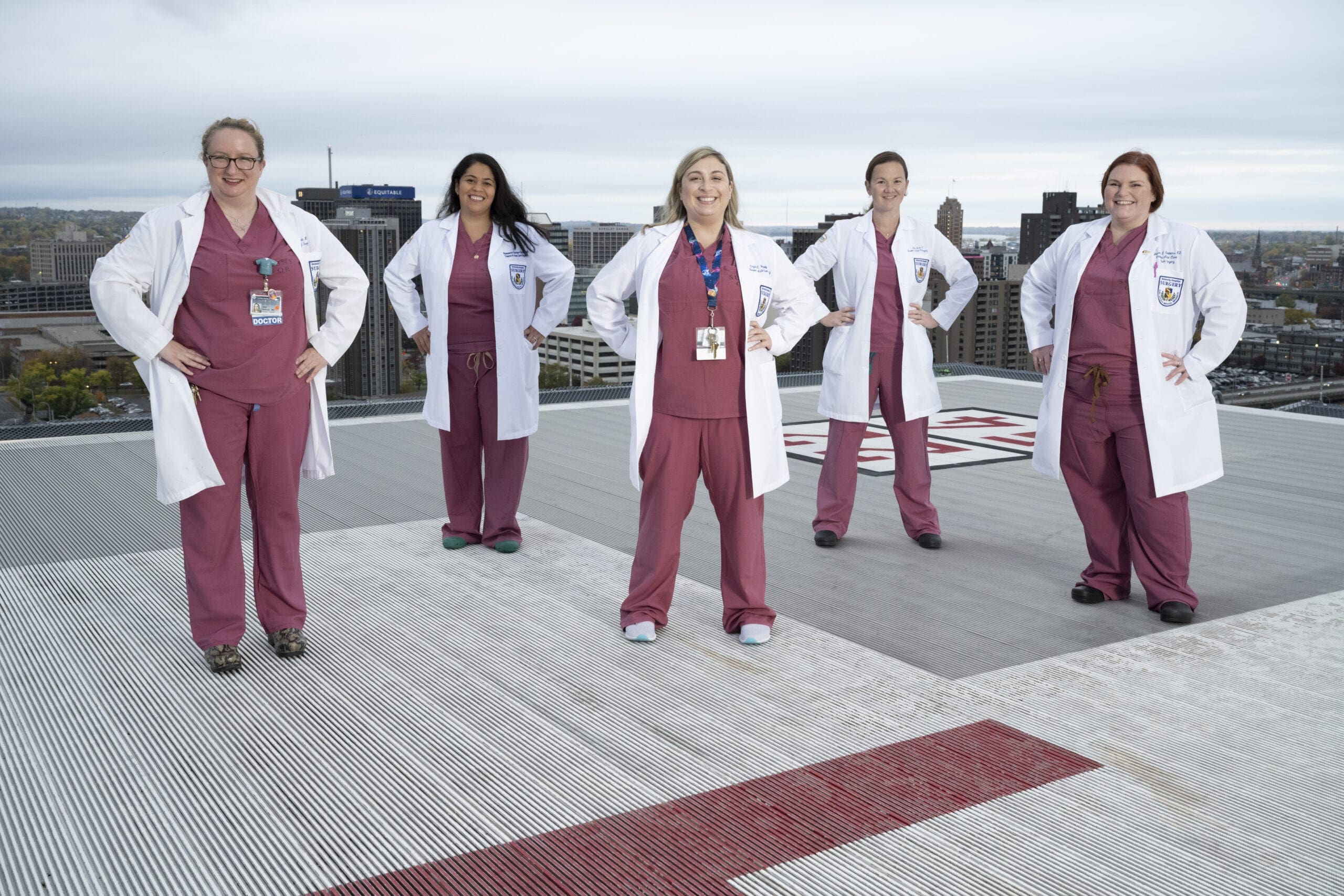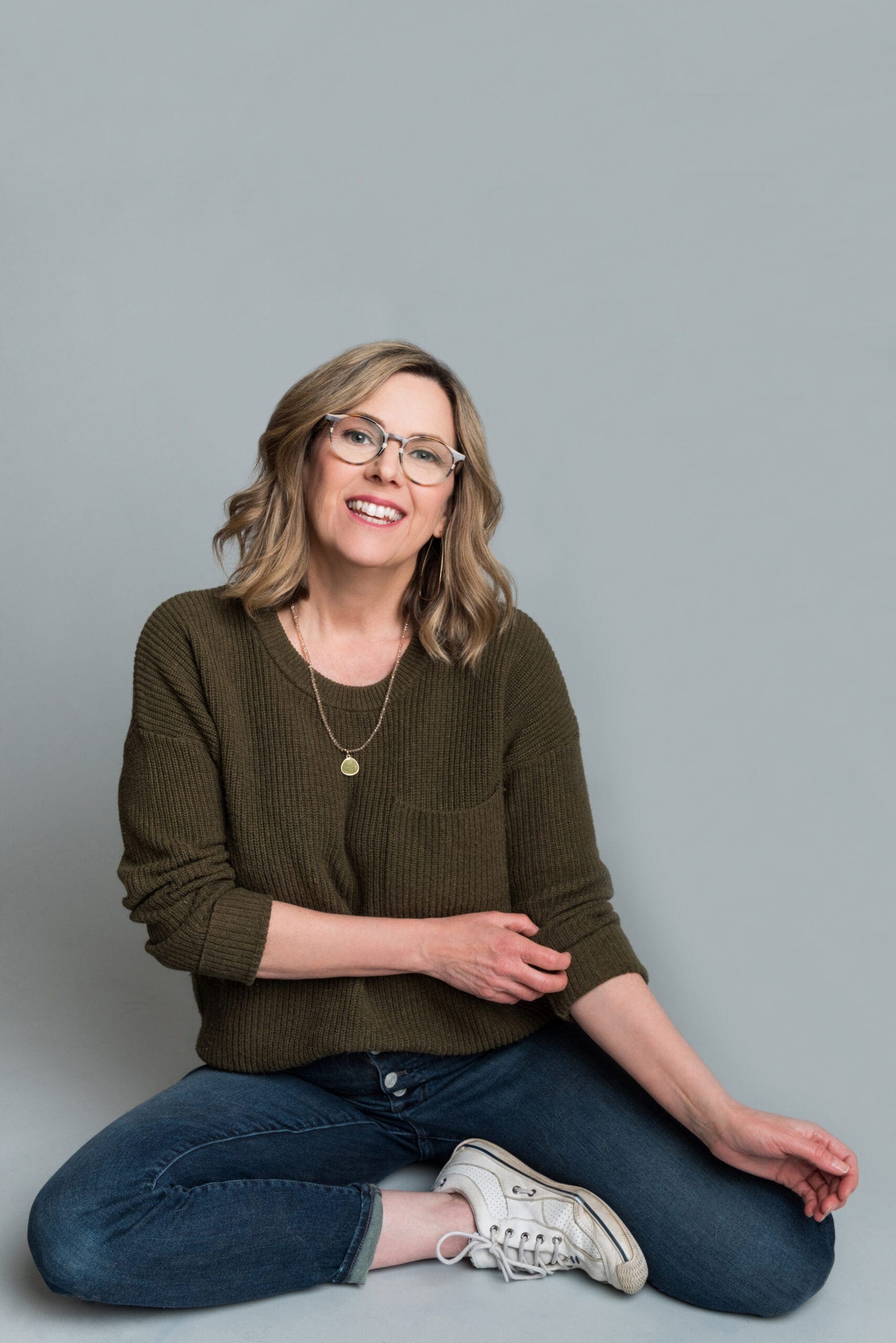Leading the Army of Good
By Lorna Oppedisano | Photography by Alice G. Patterson
Linda Lopez was going to run The Washington Post. After moving around the country with her family — her father was in the military — she landed at Syracuse University’s S. I. Newhouse School of Public Communications to study journalism, and make a positive impact on the world.
Her first story for the college newspaper, The Daily Orange, made the cover page, a tale about the newly built Carrier Dome. Sophomore year, she was made managing editor.
Also during her time at the university, the fall of her first semester in Syracuse, she was introduced to the area’s nonprofit community through a part-time weekend job at the Rescue Mission’s alcohol crisis center.
It was a major turning point in her life. Despite dreams of journalism she’d carried through junior high and high school, she’d found a new path she loved, Linda remembered.
“I just fell in love with that kind of work,” she said. “I fell in love with being able to be there for people — being able to do simple things like know everybody’s name, say ‘Good morning’ and talk to people.”
Linda switched gears, and began her nonprofit and human services career with 14 years at the Rescue Mission. She did “a variety of things,” she recalled, including opening an education center for the homeless. She then served as director of program services at The Salvation Army, where she remained for about 12 years, before working for the county until late 2016. Last year in November, Linda returned to The Salvation Army, this time as executive director for community services.
She wasn’t looking for a job change, but found the perfect fit.
“I love nonprofit, but I love The Salvation Army,” Linda said. “I love what The Salvation Army does. I love what The Salvation Army stands for, how The Salvation Army does its work. So, it felt like coming back home again.”
Collecting bits and pieces
Linda returned “home” armed with the knowledge she’d gleaned from her previous experience at The Salvation Army, along with the Rescue Mission and Onondaga County. Being a part of the nonprofit sector for decades, she’s seen colleagues transition to executive director positions themselves, and had the opportunity to work for influential leaders, like Clarence Jordan, Bobbie Schofield and Ann Rooney, she said.
“You sort of take bits and pieces,” she said, explaining that as you find yourself as a leader, you discover what’s important to you.
For Linda, one of those “bits and pieces” is making a conscious effort to bring those you’re trying to help into the conversation and process, by listening to their perspectives and experiences. Working as the project director of ON CARE helped instill this lesson.
After her time at the Rescue Mission and The Salvation Army, Linda transitioned to working for Onondaga County, first with ON CARE, and then eventually as deputy commissioner for the department of children and family services.
ON CARE, a grant-funded program, aimed to bring together children’s services in Onondaga County. As project director, Linda had the opportunity to help “shape the system of how things could be delivered better to kids and families,” she explained.
“[In receiving that grant,] part of what you commit to is giving families and youth a voice at the table — a voice in governance, a voice in assessing how the system works and how it doesn’t,” Linda said.
Listening to those voices of people who were actually living the reality of those experiences and navigating the system gave Linda an appreciation of their perspectives.
“At the end of the day, their lived experience probably trumps anything that we know from a book or otherwise,” she said.

Diving back in
Linda’s hiatus from The Salvation Army had been eight years long. She was excited for a homecoming, but knew it was important to remember that people change and evolve, she told the team.
For the first few months, Linda reacquainted herself with the organization, spending days meeting with staff, board members and community supporters to get feedback on The Salvation Army’s functions.
She was happy to find that while the organization had grown — a number of new programs aimed at helping everyone from children to seniors had been created — the core of The Salvation Army hadn’t changed.
“The Army is always about hope. The Army is always about compassionate service to people. It’s always about doing whatever it takes,” she said. “And so, that didn’t change. And that’s part of what pulled me back.”
Linda was welcomed back to a familiar team that valued those core components as well. Two department heads have been with the organization for 20 years. Another two have been with The Salvation Army for 10 years. There are a number of long-time board members who have consistently dedicated their time to the cause, too, Linda said.
Returning to the organization was like going to a new school and already having some friends, she said.
“And I went to a lot of new schools, so I know how that feels,” Linda added with a laugh.
This first year back was a busy one, she reflected. Starting on Nov. 1, 2016, meant jumping right into the Christmas season. And that meant everything from the red kettle fundraising campaign to the Christmas Bureau to managing holiday volunteers, on top of the 44 programs The Salvation Army runs.
“It was a wild start,” Linda said.
Working with a staff equally committed to The Salvation Army’s role in the community made stepping into the leadership position an easy transition, she said.
“We’re willing to tackle really hard stuff,” Linda said. “We don’t shy away from populations or problems that might feel daunting in many ways. We run toward those.”
Fighting poverty
A top priority of The Salvation Army, shared by many other organizations in Central New York, is the effort to reduce poverty in our region.
According to a recent Census Bureau report, Syracuse’s 2016 poverty rate was the 13th worst in the country, having dropped from 29th worst a year prior.
“That’s something we’re serious about tackling,” Linda said. “So, some of that is figuring out, what are the barriers? What are the systemic barriers? It’s not just an individual problem. There are systemic barriers that keep people in poverty.”
Along with being part of Greater Syracuse H.O.P.E., an initiative that aims to bring together the community in hopes of making a plan for positive change, The Salvation Army’s existing programs fight those systemic barriers every day.
While the organization is there to meet crisis needs, like lack of food, clothing and shelter, a main goal is to help people “build capacity and be able to move forward and really be able to thrive,” Linda said. That’s addressed on every level, from childcare to programs aimed at keeping seniors healthy and independent, she added. Each year, The Salvation Army helps more than 40,000 people.
“There’s lots of touch points that can make a difference,” Linda said.
On the individual level, Linda and The Salvation Army staff participate in those initiatives, too, from subcommittees to advisory groups to steering committees, she said. But it really doesn’t come down to which individuals or organizations receive the credit, Linda stressed.
“It’s, ‘Can we come together and make these things happen and make them change?’” she said.
Keeping it all in perspective
As grateful as Linda is for her role in The Salvation Army, she’s equally grateful to be a mother of four, she said. Like any woman attempting the work/life balancing act, she knows that keeping everything in healthy perspective is crucial.
“Work is work and life is life. Life trumps work,” Linda tells her staff. “As important as the work that we do here is, I don’t ever want to sacrifice my family to do this work. And I don’t think I have to.”
For many of The Salvation Army staff — Linda included — life and work overlap. Over the years, her children, now ages 29, 21, 10 and 9, have joined her as volunteers at the organization’s events. She has piles and piles of photos of her family in their Salvation Army shirts and sweatshirts, happily ringing bells for the cause.
“I don’t think kids are ever too young to start to learn that it’s important to share what we have with people who might not quite have as much,” Linda said. SWM







You must be logged in to post a comment.